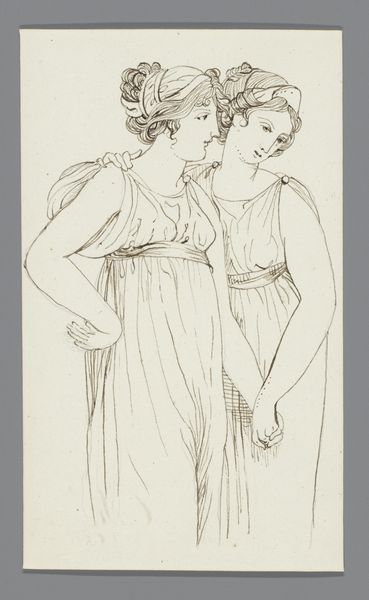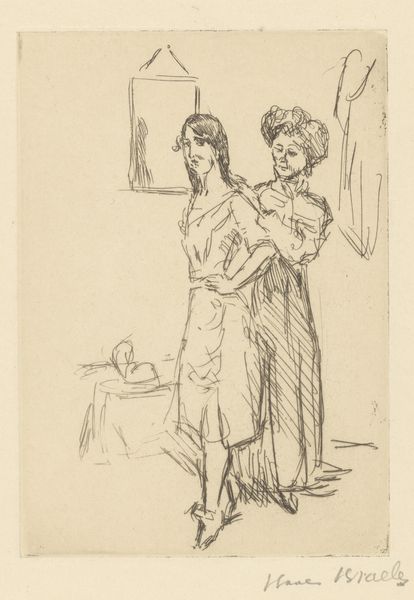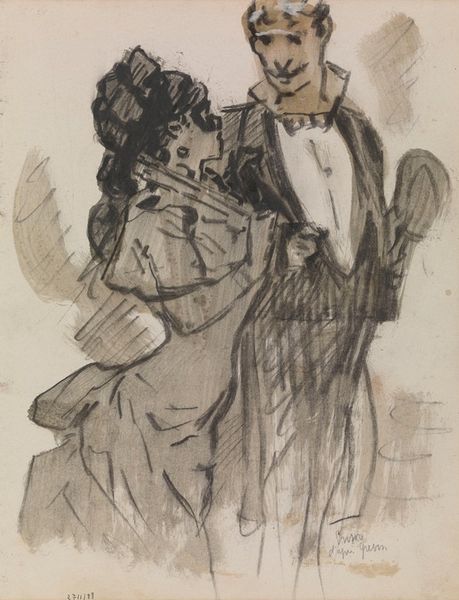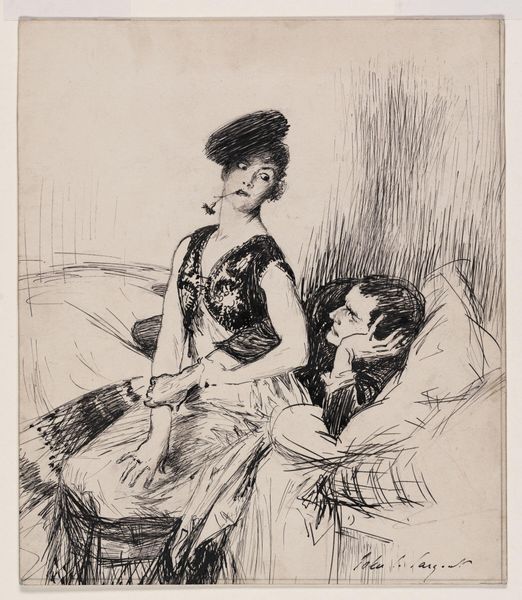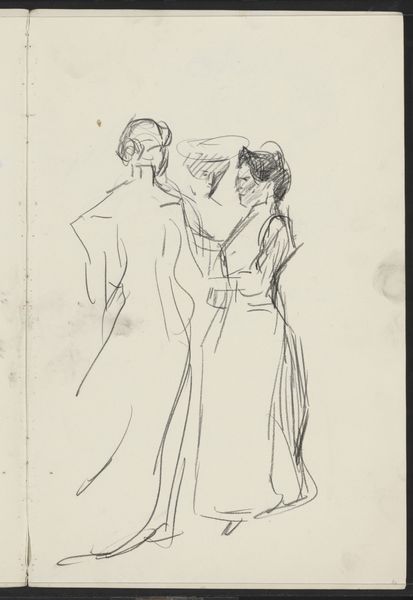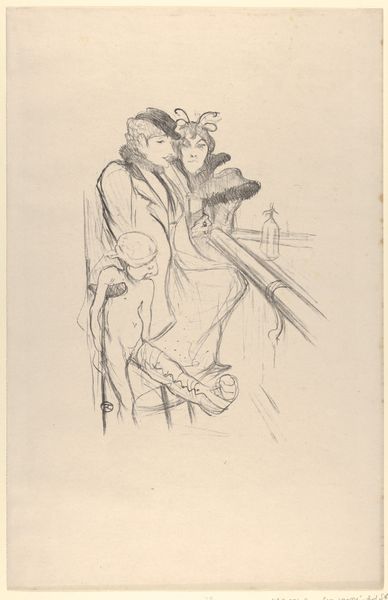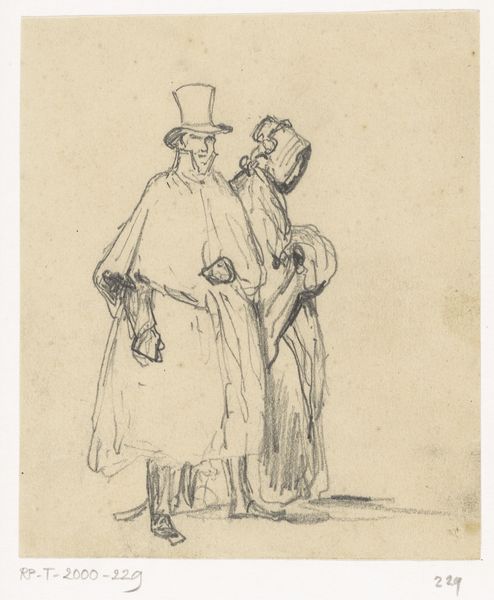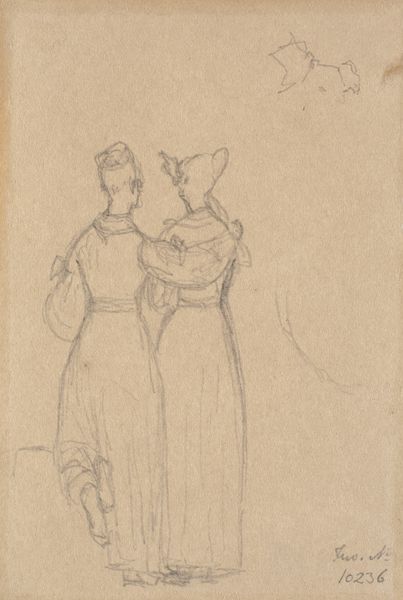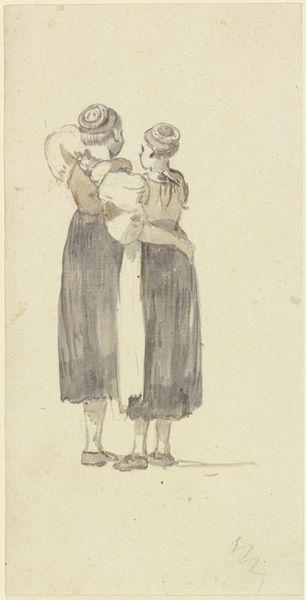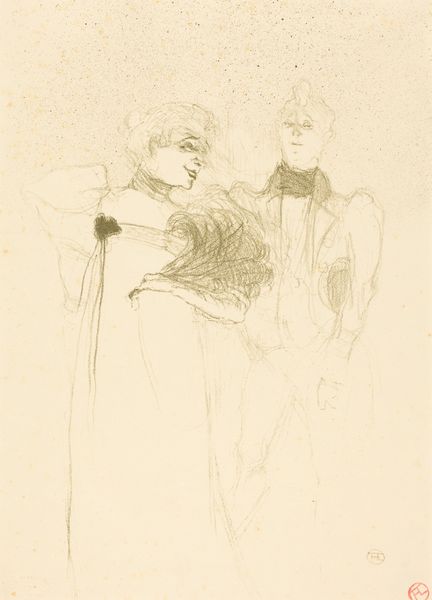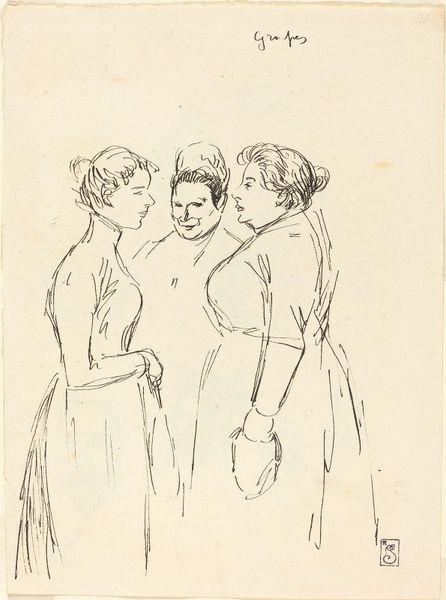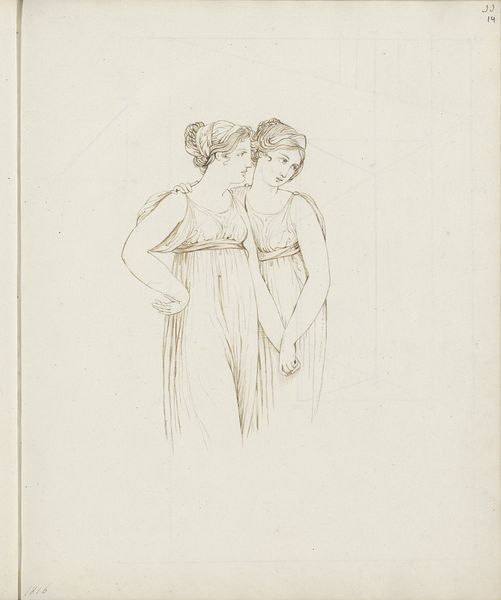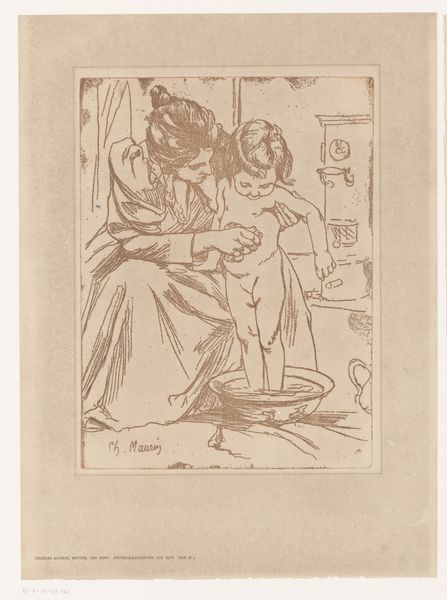
drawing, paper, ink
#
portrait
#
drawing
#
impressionism
#
figuration
#
paper
#
ink
#
romanticism
#
genre-painting
Copyright: Public domain
Editor: Here we have Steinlen’s drawing "Deux Trottins," done with ink on paper. The sketch-like quality almost makes it feel like we're intruding on a private moment, or catching a glimpse of everyday Parisian life. What do you see in this piece? Curator: I see a reflection of the Belle Époque, but through a critical lens. Steinlen, though associated with Impressionism and Romanticism, consistently engaged with social commentary. Look closely, and ask: Who are these women, these "trottins"? They were errand girls, working-class women navigating a rapidly changing urban landscape. The romantic aesthetic shouldn't blind us to their social standing. Editor: So, it’s not just a pretty picture of Paris? Curator: Precisely. Consider the male figures in the background, rendered almost ghostly. They represent the patriarchal gaze, the ever-present societal power dynamic. Are these women truly free, or are they constantly under surveillance? Think about the limited opportunities available to women at the time, particularly those from marginalized backgrounds. How did this impact their daily existence, their interactions? Editor: I didn't even notice the men in the background! So you’re saying Steinlen uses a seemingly innocuous genre scene to explore deeper issues? Curator: Absolutely. He invites us to question the societal structures that confine these women. The beauty of the line work and the composition serves as a contrast, highlighting the tension between appearance and reality, freedom and constraint. This isn't just a drawing; it's a conversation about class, gender, and power. Editor: I guess I saw the Impressionistic style and assumed it was all about capturing a fleeting moment. Now I see how much more there is. Thanks for pointing that out! Curator: My pleasure. It's vital to remember that art doesn't exist in a vacuum; it’s a reflection of, and a challenge to, the society that produces it.
Comments
No comments
Be the first to comment and join the conversation on the ultimate creative platform.
